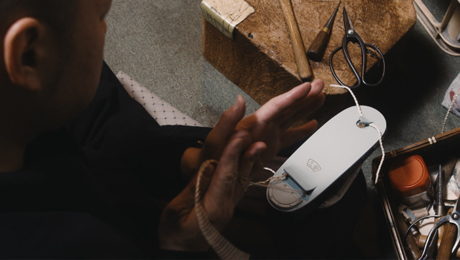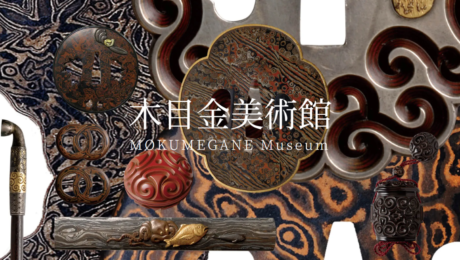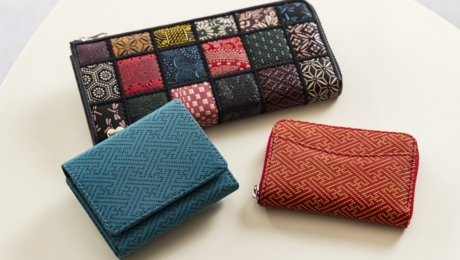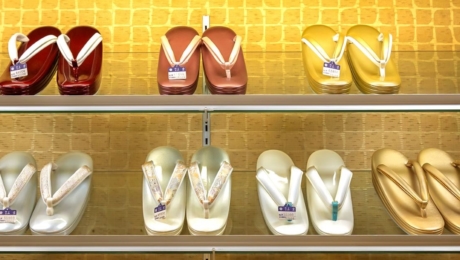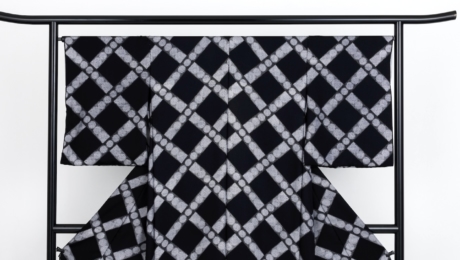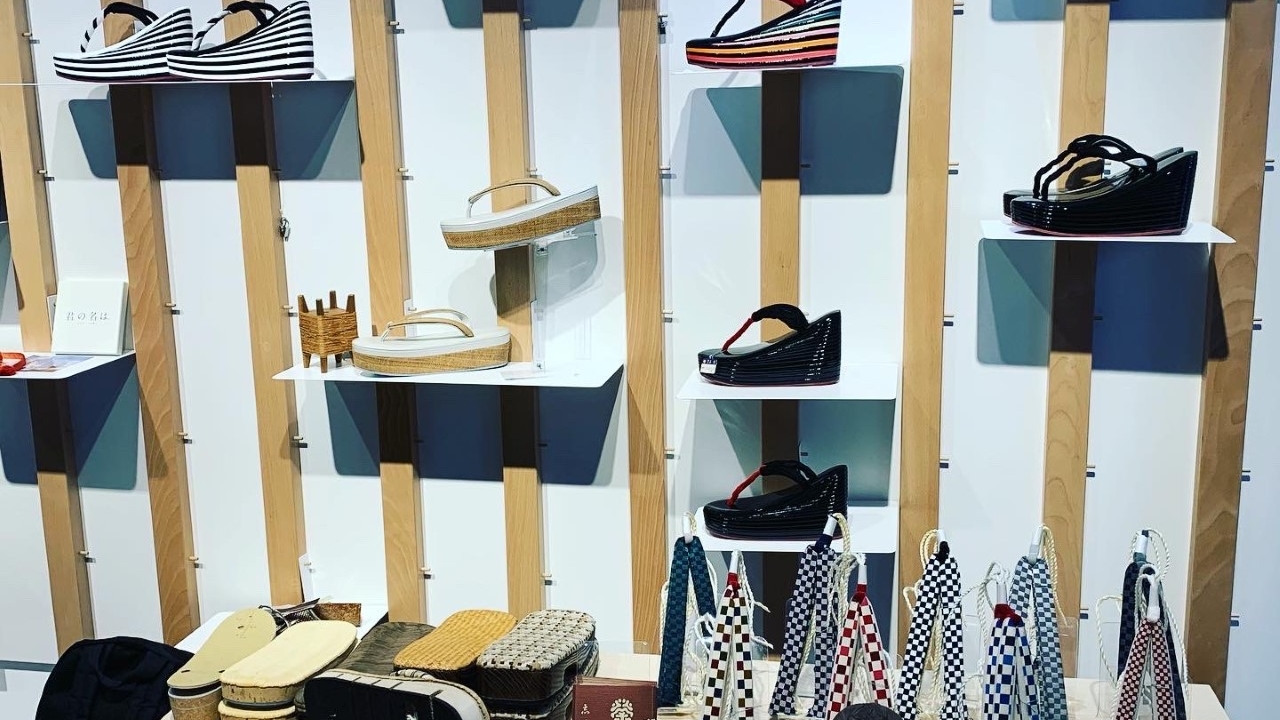
From Japanese sandals that adorn the feet of the people of Edo to “ZORI” sandals that bring joy to people around the world A new endeavor for Yotsuya Sanei
2020.10.12
FASHION“Yotsuya Sanei,” a company famous for its original sandals and wooden clogs, has been enthusiastically designing “ZORI” sandals that can be worn with Western apparel. Part of the company’s efforts include a collaboration with “Atelier de Paris” of France.
These zori sandals have been designed with slightly broader soles to fit the feet of French people. The soles are made by layering lightweight cork, making them easy to walk in. At the same time, soft and lightly creased cowhide is used for the surface of these sandals, while traditional “Shinafu” fabric woven from bark fiber is used for their sides and thong straps.
Lucie Touré of “Atelier de Paris,” who participated in the design of these sandals, has launched many works that utilize materials such as textiles and paper.
Makoto Ito, the third-generation owner of Yotsuya Sanei, looking back on this collaboration, said, “Lucie pointed out to us that an enamel leather would create an excessively clean look that might cause French people to think that it is plastic, so we decided to go with tanned leather that still has a residual natural texture.”
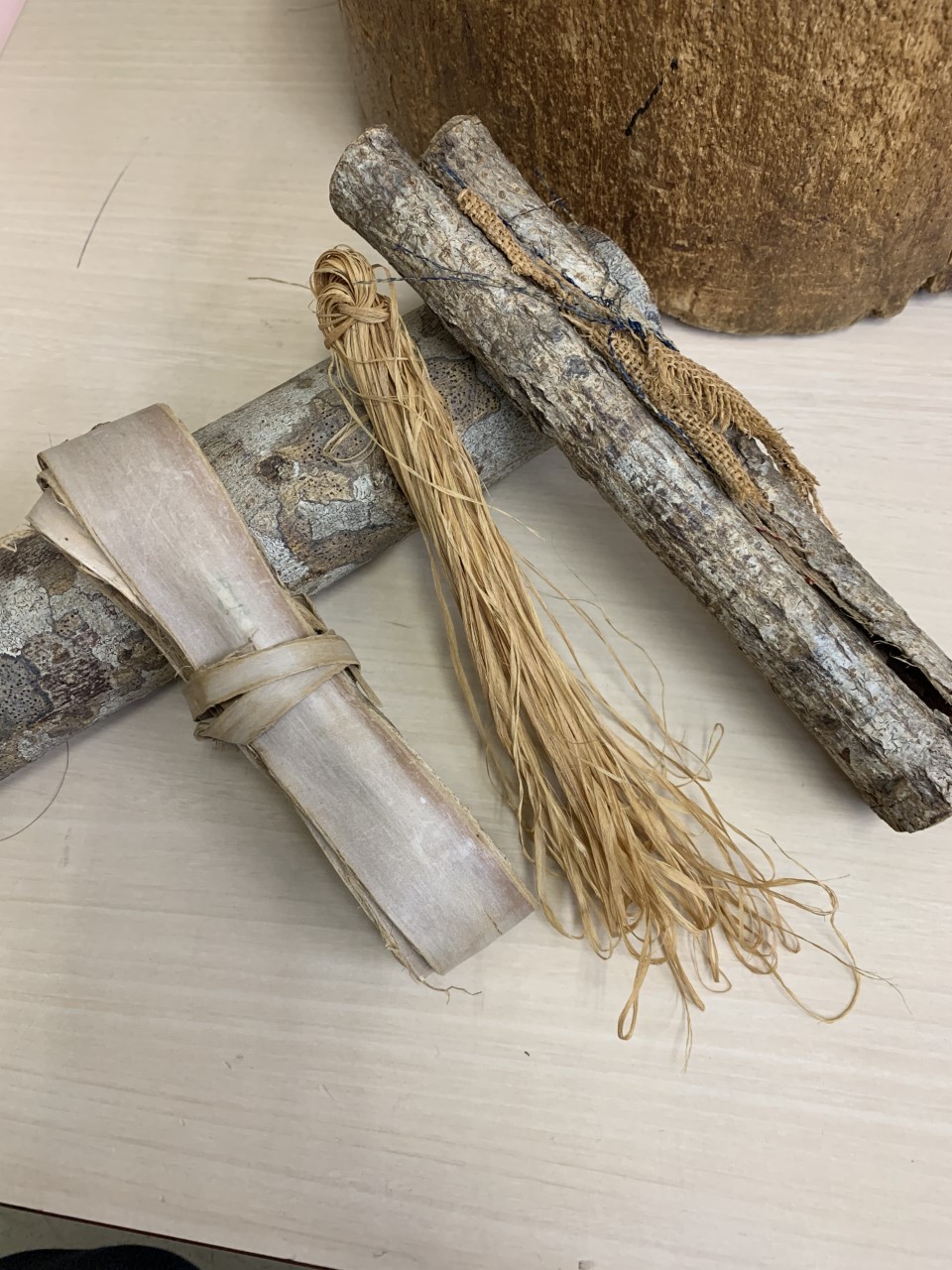
Yotsuya Sanei has brought the comfort and aesthetics of traditional footwear to everyone who loves Japanese apparel. However, this collaboration was still an unprecedented challenge for the company.
“We wanted to convey the culture of Japanese zori sandals instead of merely creating a new footwear that resembles them.”
Zori are worn with a gap between the big toe and the second toe, while the strap should be in close contact with the instep to secure the sandal to the foot. Unlike regular sandals, the thong straps of zori can be loosened or tightened according to the shape of one’s foot for maximum comfort. Allowing the user to experience this comfort is essential for conveying the culture of zori.
The production of zori sandals is a laborious process and was one of the biggest challenges. Without any blueprints, it relies on the craftsman to manually produce a new pair of zori based on existing pairs,s before the process is repeated again and again. The craftsman uses his fingers to feel the sandals, observes their details with his eyes, and tries them on with his feet. The reason zori offer such a remarkable level of comfort is because of this meticulous production process that requires all five senses.
Upon recognizing the limitations of designing these sandals digitally, Ito passed a physical sample to the coordinator who brought it with him to Paris. This allowed Lucie to get a better feel of the sandals using her five senses in a manner that was impossible with blueprints prepared on computers, and the subsequent work became more straightforward and practicable.
“ZORI” were greeted with exhilaration at a launch event in January. These sandals are novel in their appearance and create a stylish look when worn with a dress, but above all, they offer superior comfort. Even after the event, emails from overseas continued to stream in.
“This is just the beginning for zori sandals designed to be worn with Western apparel. I hope to expand the scope of our collaboration and exchange more ideas in the future to create new ZORI designs,” Ito suggested.


